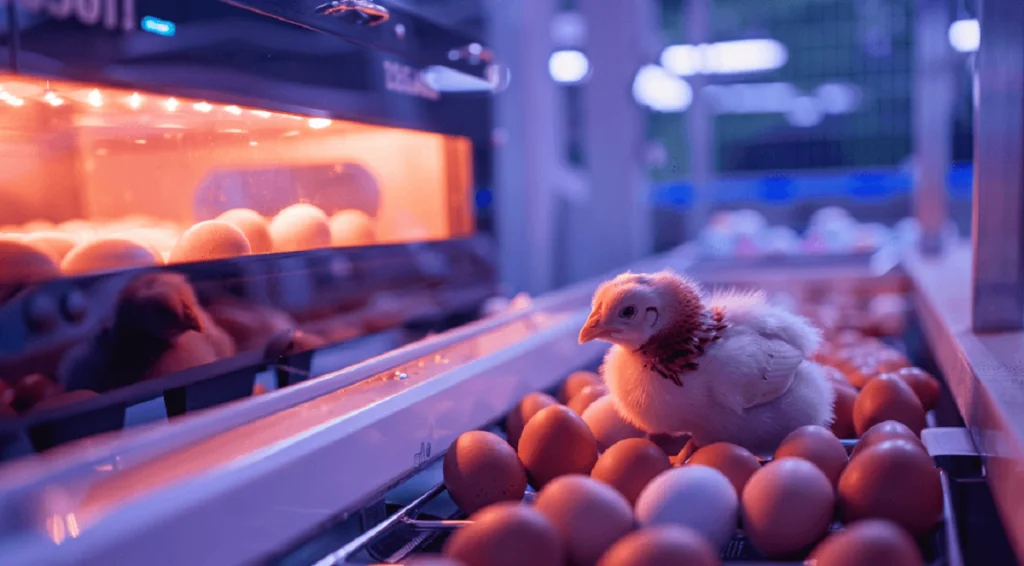The hatching of chicken eggs requires the hatcher to be very meticulous, with the temperature being one of the most critical things. The temperature for chicken egg incubator is the key point which needs to be observed in order to have chicks of good health and success in the hatching process.
A little variation in the incubator temperature celsius, away from the optimal one, can also be dangerous to the embryos resulting in hatching failure or abnormalities.
As for the poultry farming, backyard chicken keeping and the VEVOR egg incubator has come to be a more than a reliable and user-friendly solution for hatching the chicks. The incubator is equipped with an advanced system which will give you the ability to monitor the egg hatching temperature chart accurately, and it will allow you to adjust it as you wish, increasing the opportunity for a successful hatch.
Through following the instructions provided in this article, you’ll have the opportunity to learn more on the complex aspect of the temperature for chicken egg incubator, therefore, making it possible to choose the right setting for your VEVOR egg incubator.
Table of contents
Understanding the Science Behind Incubation Temperature
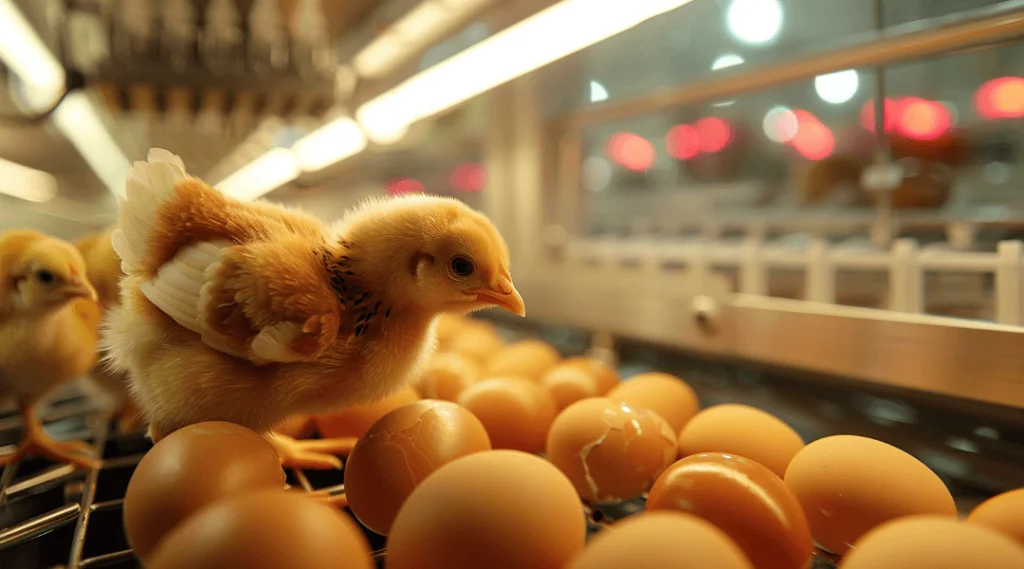
Having knowledge of the science behind incubation temperature is of great help and may ensure successful hatching. It is all about monitoring the right temperature range that allows for appropriate embryo development, and that takes into consideration factors like forced-air versus still-air incubators or the role of temperature in different growth stages without determining gender.
The Ideal Temperature Range for Chicken Egg Incubation
When it comes to chicken eggs incubation, having the optimum temperature range in mind is of the utmost importance in order to have a successful hatching. The chick embryo development is largely dependent on temperature.
As per the industry norms and comprehensive research, the best incubation temperature for eggs is 99.5° F (37.5° C) to 100.5° F (38.1° C). This narrow range is no doubt important for the whole process of embryo development and growth in the eggs.
The critical temperature range for incubating embryos falls below this zone, which might result in weak or deformed chicks. Temperatures above the recommendation range will lead to the embryos developing too quickly, thus increasing the risk of deformities and even death.
The range of incubation temperature (101° F to 102° F) should be maintained during the entire 21 days of incubation to guarantee the highest possible hatching rates and healthy hatchlings.
Forced-Air vs. Still-Air Incubators: What You Need to Know
When it comes to incubators, there are two main types: forced-air and still-air output. Recognizing the distinctions between these two types is paramount for the purpose of reaching the optimal temperature control and consequently the successful incubation.
Blowers or fans are employed to keep the air circulated around the incubation unit of the forced-air incubators. The constant air movement assists in keeping the temperature at every corner of the incubator uniform, which reduces the rate of hot/cold spots that can lead to developmental issues with the embryo.
The forced air incubators, although they are more expensive, provide a better option when it comes to the temperature control and its distribution.
A different approach to incubators that rely on still-air, involve natural air circulation and conduction, to spread heat within the chamber. However, such incubators are usually cheaper which could mean they are more susceptible to temperature fluctuations and uneven distribution of heat hence making it difficult to maintain the right temperature range.
The Role of Temperature in Embryo Development
Temperature, in turn, determines the embryo development and growth of the chicken within the egg. The given range of temperature is suggested to help in all stages of the embryonic development process, from the first cell division to the development of important organs and systems.
Keeping the embryo at the right temperature besides ensuring that the embryo’s growth is at the correct pace also allows for the timely formation of organs and structures like the cardiovascular system, skeletal system, and internal organs.
Temperature ranges outside of the suggested boundaries can cause the derailment of this fragile process, which can eventually produce developmental defects or lead to embryo death.
Through comprehending the pivotal role temperature plays during the embryo development, and maintaining the recommended temperature range, you can avoid the egg from hatching healthy and viable chicks by your VEVOR egg incubator.
Does Incubation Temperature Affect the Gender of Chickens? Debunking Myths
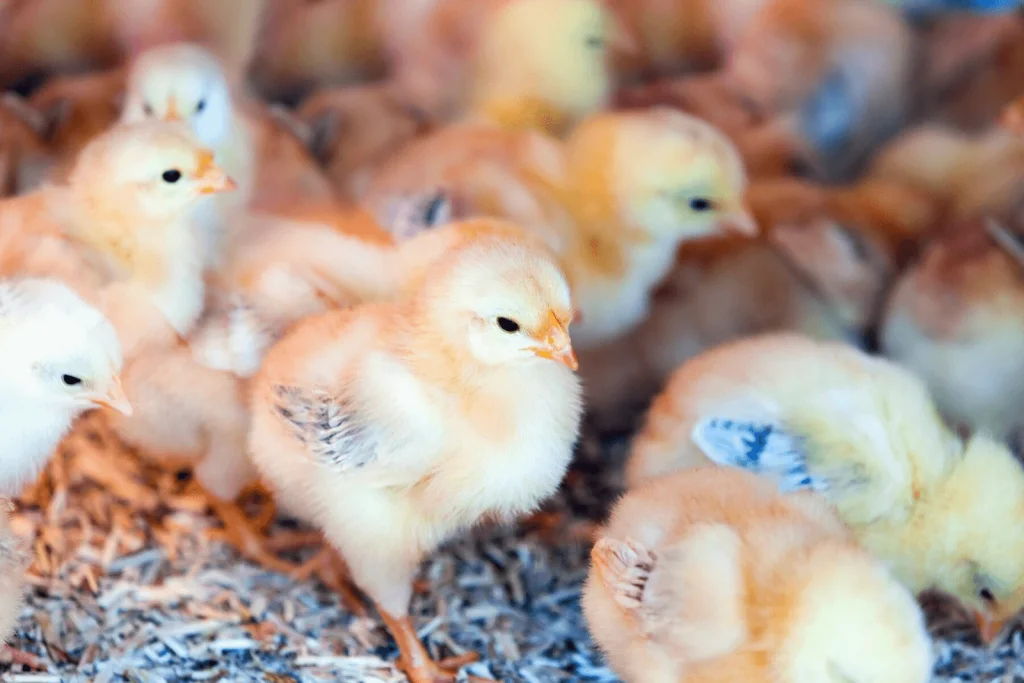
The gender of a chick is determined at the moment of fertilization, when the genetic material from the rooster and the hen combines. It is the rooster’s sperm that carries either the Z or W sex chromosome, while the hen’s egg always contributes the Z chromosome.
If the egg is fertilized by a Z-bearing sperm, the resulting chick will be male (ZZ), and if it’s fertilized by a W-bearing sperm, the chick will be female (ZW). This process is entirely independent of the incubation temperature.
Multiple studies have been carried out to assess the possibility of chromosomal gender and incubation temperature being related; and the results obtained have not indicated any relationship. Researchers have incubated eggs at various temperatures, both within and outside the recommended range, and the resulting gender ratios have remained unchanged, adhering to the expected 50 women per hundred men.
Temperature of embryo incubation is the most important factor for the correct embryo development and hatching, it is not the factor that affects the gender of chicks. Factors such as breed, the breeding stock age and the environmental conditions during the breeding season can influence the final gender ratio and may be one of the components of the sex determination, incubation temperature itself has no direct influence on sex determination.
Maximizing Hatch Rates: Additional Tips Beyond Temperature
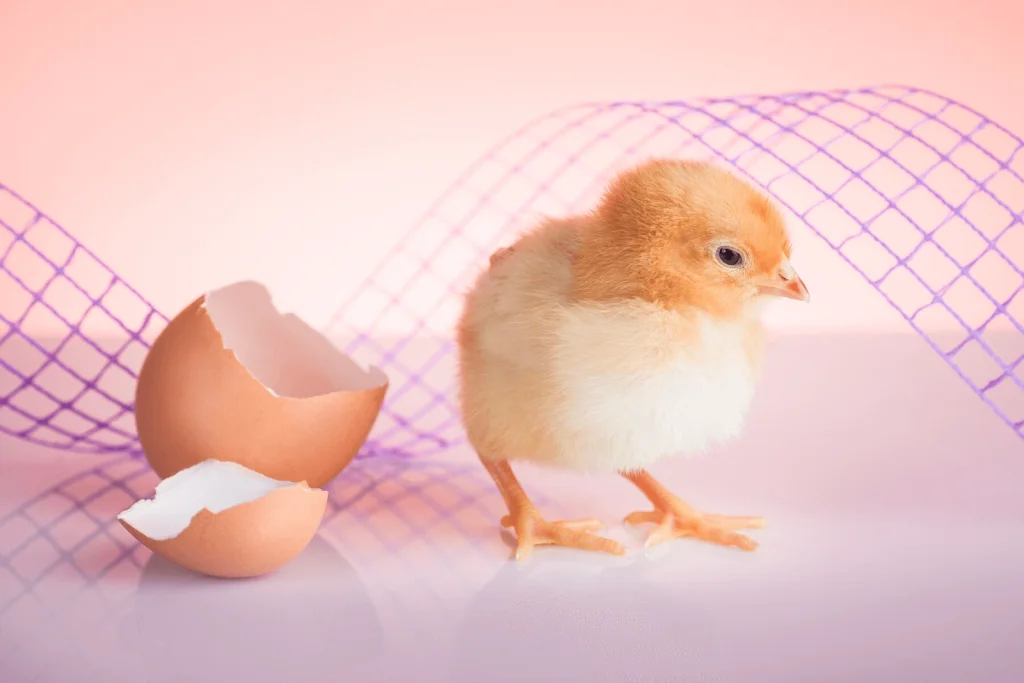
While maintaining the ideal incubation temperature is crucial for successful hatching, it’s important to recognize that temperature alone is not the sole factor influencing hatch rates. To achieve optimal results and maximize the number of healthy chicks hatched, it’s essential to consider other key elements of the incubation process.
The Importance of Humidity Alongside Temperature
Humidification is one of the factors that affect successful incubation of eggs. Proper humidity levels are necessary for several reasons:
- Egg Weight Loss: It is not uncommon for the eggs to lose some of its weight after they have been incubated which happens due to the loss of water through evaporation. The ideal humidity level maintains the permissible loss rate of water not to the extent that leads to excessive dehydration, while at the same time not to cause excessive moisture retention, the latter negatively affecting embryo development.
- Air Cell Formation: The saturation level is a factor which contributes to the production of the air cell and its size during the egg incubation process. A proper size air cell is vital for the chick’s ability to breathe and pip (end to the shell) during the hatching process.
- Membrane Condition: The humidity will not only affect the quality of the membranes of the eggs, but the role of the membranes is also significant in gas exchange and the nutrition transfer to the developing embryo.
We suggest that you should strive to maintain the recommended humidity levels, which often lies between 50-60% for the initial 18 days and then increasing to 65-70% for the last three days before the hatching date.
Egg Turning: How and When to Do It
Egg turning is a critical aspect of the incubation process that should not be overlooked. During natural incubation, a hen instinctively turns and repositions her eggs multiple times a day. In an artificial incubator, this process must be replicated manually or through an automatic turning mechanism.
Turning the eggs serves several purposes:
- Preventing Adhesion: If eggs do not move at all for too long, the embryo may get stuck to the membrane around the shell which may lead to deformities or hatching problems.
- Distributing Nutrients: Enrolling the eggs guarantees the respective nutrients are in uniform distribution and thus accessible to the growth of the embryo.
- Positioning the Embryo: Right attitudinal turning helps the embryo to fit into the egg securely and aid in the better development and the proper formation of the body.
Most professionals recommend the turning of the eggs at least 3 – 5 times per day during the incubation process for the first 18 days. One of the most important things is to keep the schedule and frequently turn over the eggs from one direction to the other in order not to let the embryos be twisted.
Ventilation: Ensuring Your Eggs Breathe
An adequate ventilation of eggs creates a situation in which they have enough air for oxygen and waste gasses like carbon dioxide are released from the air.
Deficiency of ventilation may cause the accretion of dangerous gasses, which can either asphyxiate the embryos or lead to the decrease of their growth. However, over ventilation may cause too much evaporation leading to moisture loss and dehydration, which might lower the hatchability.
VEVOR egg incubators are manufactured with a ventilation system which allows air to flow in at a controlled pace. But, it is still necessary to keep an eye on the air movement and to make corrections (if necessary) depending on the air conditioner in your incubator.
Why Choose VEVOR Egg Incubator for Your Chicken Eggs?
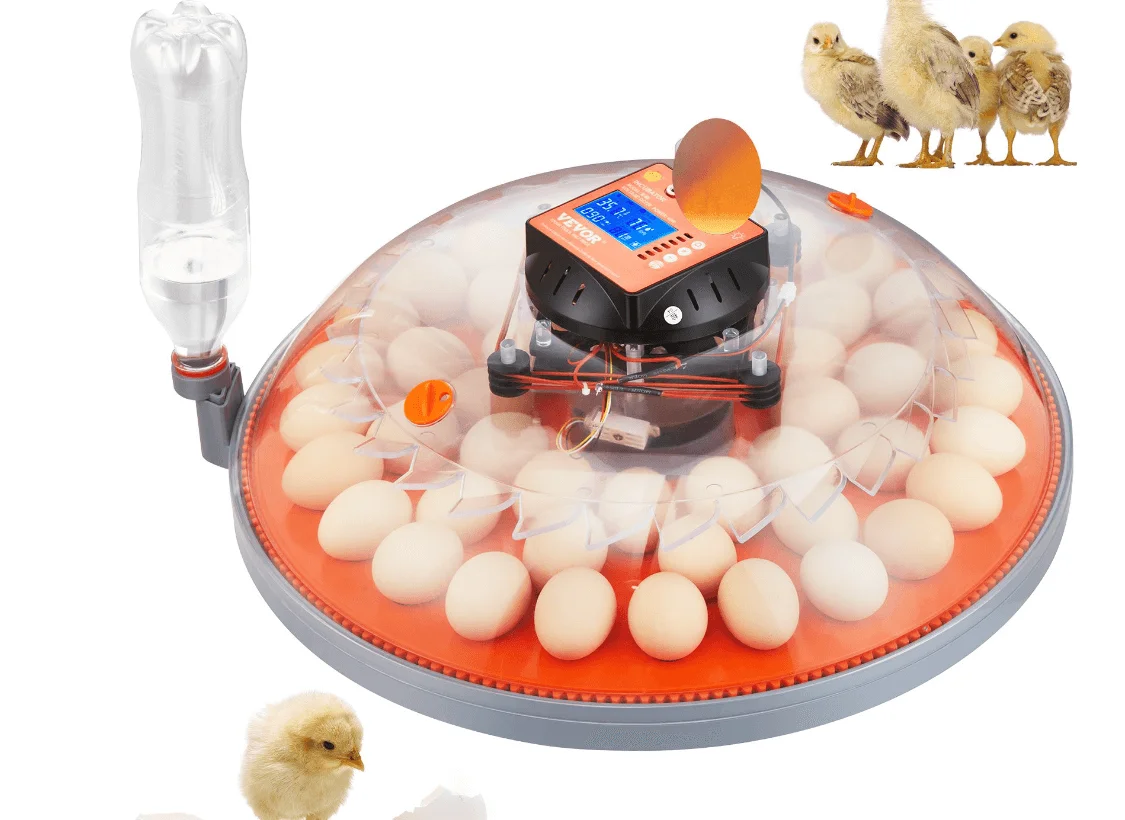
In case of chicken eggs, the right equipment can be crucial for your hatching efforts. VEVOR egg incubator ranks among the top choice of a lot of poultry lovers and professionals due to the newly introduced technical features and sound operations. Here’s why you need to choose VEVOR:
Key Features of VEVOR Egg Incubator
- Temperature Stability: It is the accuracy and uniformity of temperature range that makes the VEVOR incubator stand out among its competitors. With this modern temperature control system, the incubator achieves to sustain the required temperature range (99.5°F to 100.5°F) without any fluctuation, which may jeopardize the development of embryos.
- Humidity Control: Similar to temperature, the VEVOR egg incubator has got a humidity control function. The recommended humidity level can be kept at different incubation periods thanks to this feature. This one makes provision for the eggs to lose the lethal weight and acquire the desired air cell at the same time, thus increasing the chances of survival of the hatched egg.
- Automatic Egg Turning: Incubator features an egg-turning system that works automatically and simulates a hen’s natural behaviors of turning her eggs. The shell membrane receiving nutrients from the surrounding fluid causes the embryos to remain loose in the amniotic sac to avoid adhering to the shell membrane. This ensures the even distribution of nutrients to all embryos for proper development.
- Airflow Management: Inadequate air supply is a constant threat to embryos. Thus, proper ventilation is a vital precondition for the continuous supply of fresh and necessary air. The VEVOR egg incubator has an air exchange system that is well designed and helps with the breathing of the embryos while preventing the loss of moisture or buildup of harmful gasses.
- User-Friendly Interface: The VEVOR egg incubator is equipped with an user-friendly control panel and vivid digital displays which assure it is simple to operate and keep track of the process, even if it is a beginner. Within a few clicks, temperature, humidity, and other parameters could be set to normalize with ease, and the environment is perfectly suitable for incubation.
User Experience and Performance
The VEVOR egg incubator has received praise from so many people because of its unmatched capability to keep the constant and highly accurate temperature which is a really essential factor for the hatching success. There have been many stories about the users, noting the consistent temperature control achieved and its direct link to increased hatch rates.
One delighted customer shared their excitement about their first attempt at incubating chicks. They found the VEVOR incubator easy to set up and appreciated the clear instructions provided. After candling the eggs on day 8, they were thrilled to discover developing embryos, and they couldn’t wait to see how many chicks would hatch in a couple of weeks.
A user with a larger flock of 80 hens, turned to the VEVOR incubator to replenish their brood. They were impressed by the incubator’s size, which can accommodate up to 24 eggs, and its various features, including smooth operation, temperature monitoring, and humidity control.
Common Questions Answered
Does incubation temperature affect gender of chickens?
A: No, increasing the incubation temperature will not affect the gender of the chicks. When the egg is at the point of being fertilized, the gender of the chick is already set and is only dependent on the genetic information carried in the egg and the sperm.
My VEVOR egg incubator seems to run a little warmer or cooler than the recommended temperature range. Should I be concerned?
A: Minor deviations of a few tenths of a degree from the ideal range are generally not a cause for concern, as long as the temperature remains relatively consistent. However, if the temperature consistently falls outside the recommended range, it’s best to recalibrate or adjust the settings to ensure optimal conditions for embryo development.
Can I open the VEVOR egg incubator during the incubation process to check on the eggs?
A: While it’s natural to be curious about the progress of your eggs, it’s best to limit opening the incubator as much as possible. Each time you open the incubator, you introduce temperature fluctuations and disrupt the carefully controlled environment. If you need to check on the eggs, do so quickly and ensure the incubator is properly closed and sealed afterward.
Conclusion
The correct way to hatch eggs and create resilient, lively chicks is the ultimate dream of every poultry lover or farmer. Recreating the right temperature for the incubation period is a key factor that can differentiate between the success and failure. Now you have the VEVOR egg incubator to be your next generation tool which can not only keep the temperature right but also other important parameters like humidity and airflow all under control.
The VEVOR egg incubator’s fundamental features, which include temperature stabilizer, humidity regulator, automatic egg turning, as well as airflow management system, work in perfect collaboration to create the ideal environment for embryo growth. This incubator has an interface that is well-liked and has had some positive reviews which puts it on the top list of people who value constant and successful hatching outcomes.

